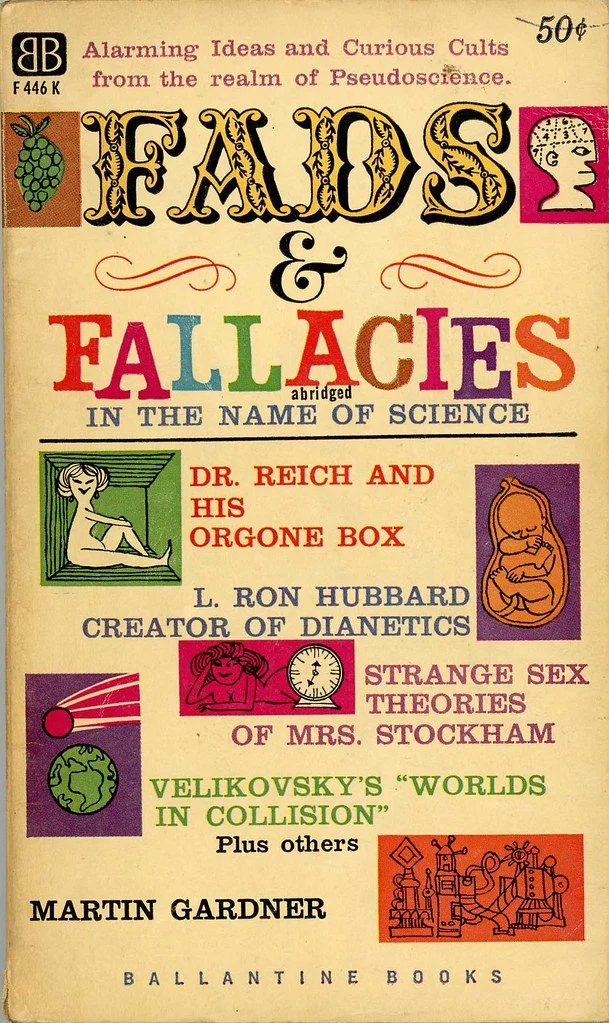MARTIN GARDNER'S SIX WAYS TO SPOT A 'CRANK'
“The best means of combating the spread of pseudo-science is an enlightened public able to distinguish the work of a reputable investigator from the work of the incompetent and self-deluded.“ — Martin Gardner
In his first book, Fads and Fallacies in the Name of Science, Martin Gardner laid out six ways to spot the pseudo-scientists, fakers, and frauds he called “cranks.” Some 70 years have passed but Gardner’s advice seems more relevant than ever.
1. Isolation — “Cranks work in almost total isolation from their colleagues. Not isolation in the geographical sense, but in the sense of having no fruitful contacts with fellow researchers. . . [A crank] does not send his findings to the recognized journals, or if he does, they are rejected for reasons which in the vast majority of cases are excellent.”
2. Persecution complex — “The modern crank insists that his isolation is not desired on his part. It is due, he claims, to the prejudice of established scientific groups against new ideas. . . . He believes himself unjustly persecuted and discriminated against. The recognized societies refuse to let him lecture. The journals reject his papers and either ignore his books or assign them to “enemies” for review. It is all part of a dastardly plot.”
3. Delusions of grandeur — The crank “considers himself a genius. He regards his colleagues, without exception, as ignorant blockheads. . . He likens himself to Bruno, Galileo, Copernicus, Pasteur, and other great men who were unjustly persecuted for their heresies.”
4. Attacking the icons — “He has strong compulsions to focus his attacks on the greatest scientists and the best-established theories. When Newton was the outstanding name in physics, eccentric works in that science were violently anti-Newton. Today, with Einstein the father-symbol of authority, a crank theory of physics is likely to attack Einstein in the name of Newton.”
5. Jargon — “He often has a tendency to write in a complex jargon, in many cases making use of terms and phrases he himself has coined.”
6. Airtight arguments — Science is open to being wrong. Proving a theory wrong leads to refined arguments and suggestions. Not so for the crank. “All the parts of his world usually fit together beautifully, like a jig-saw puzzle. It is impossible to get the best of him in any type of argument. He has anticipated all your objections. He counters them with unexpected answers of great ingenuity.”




